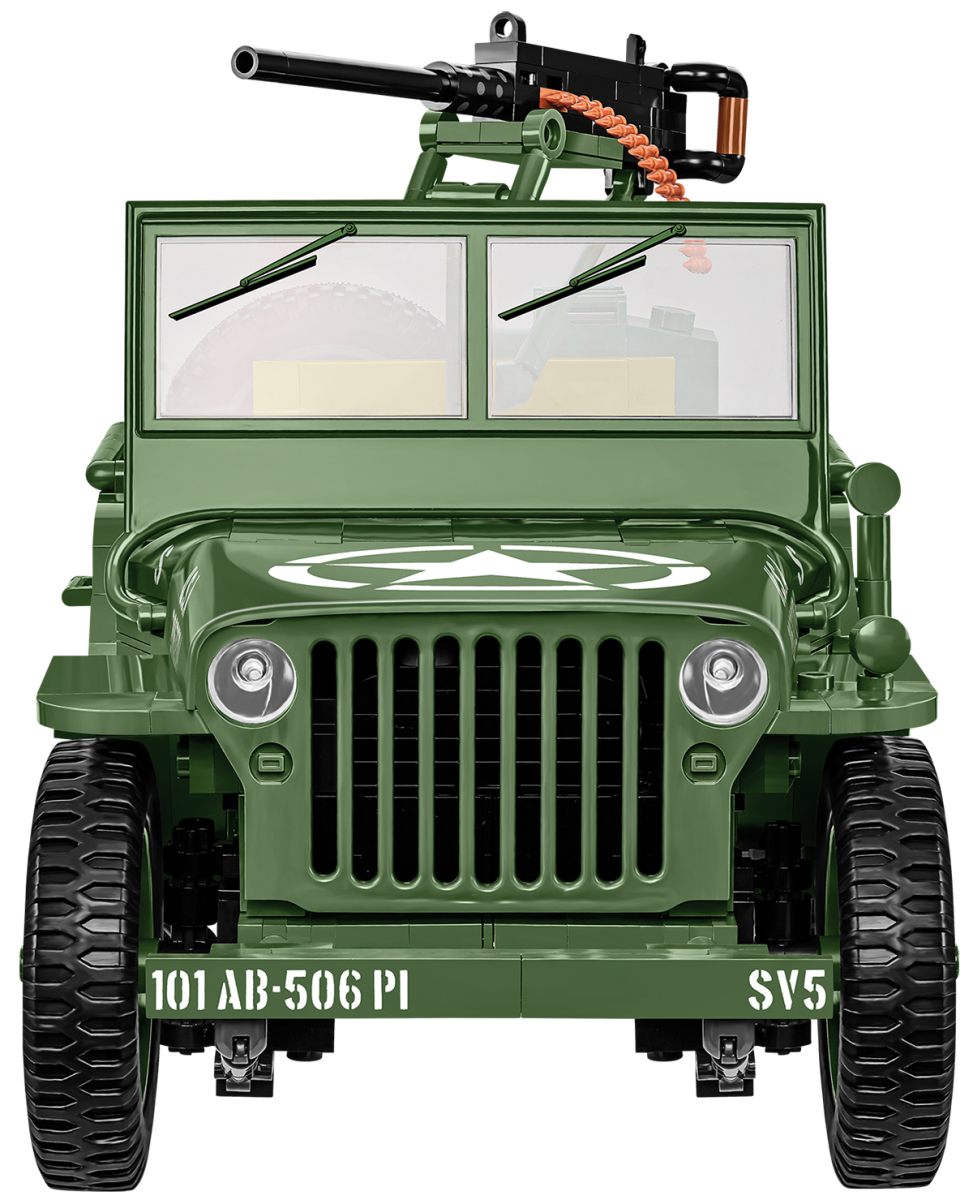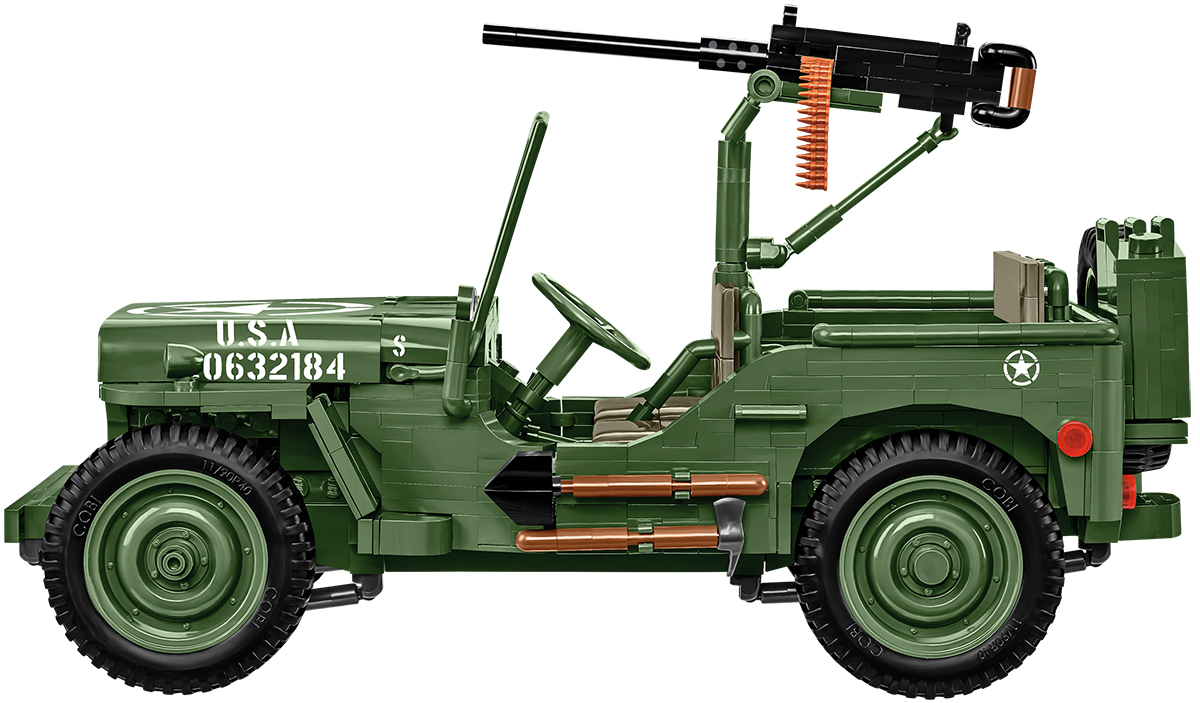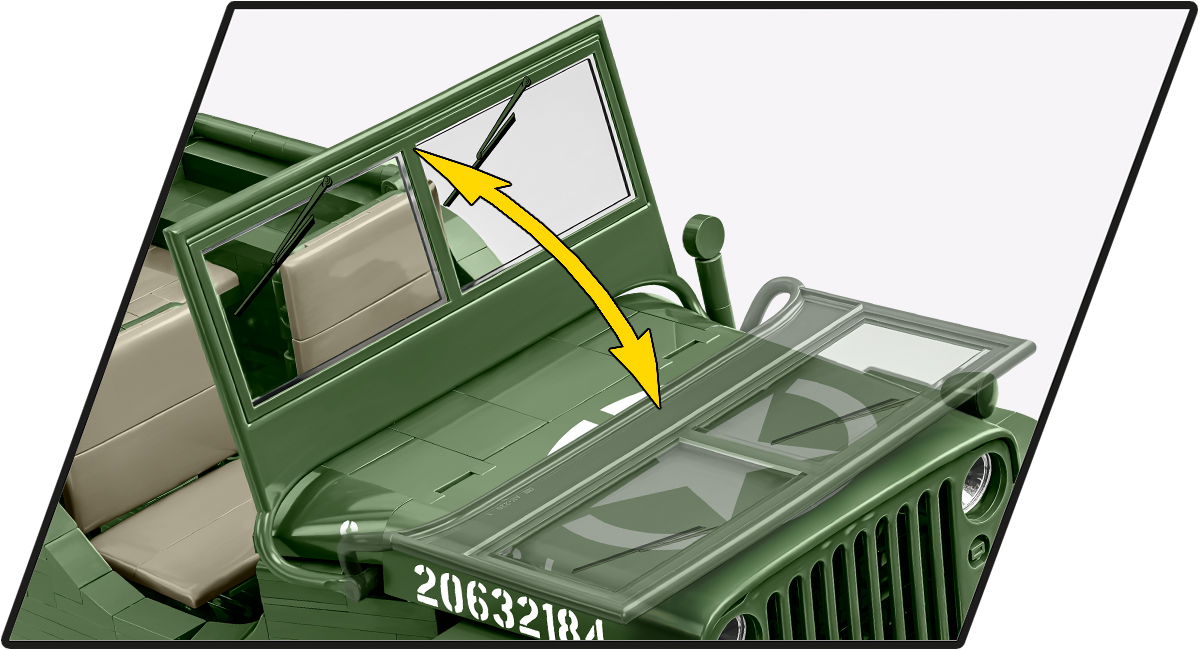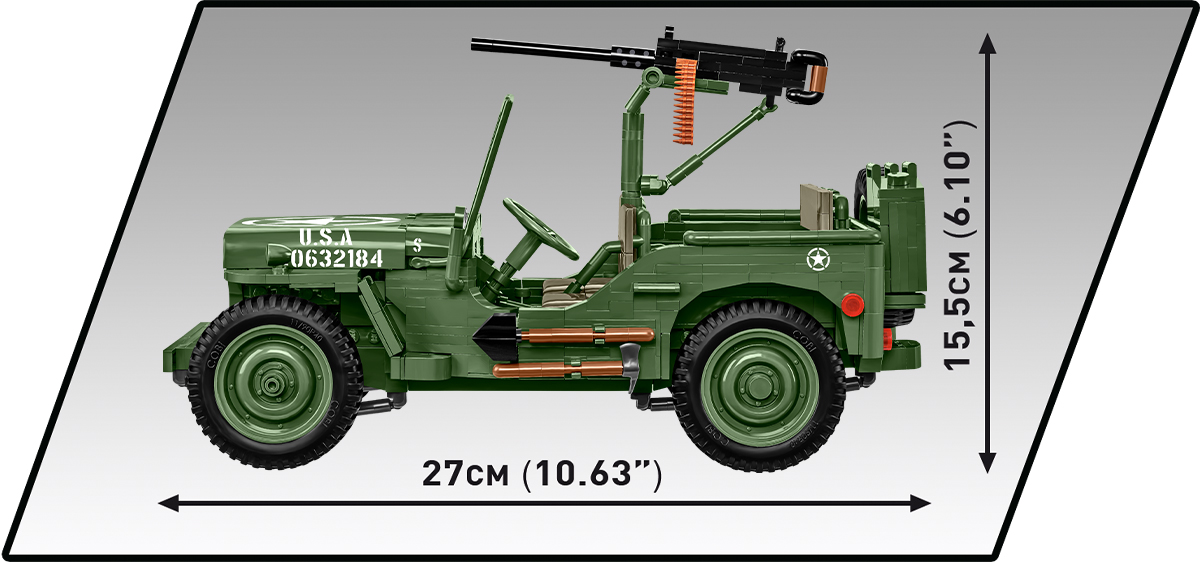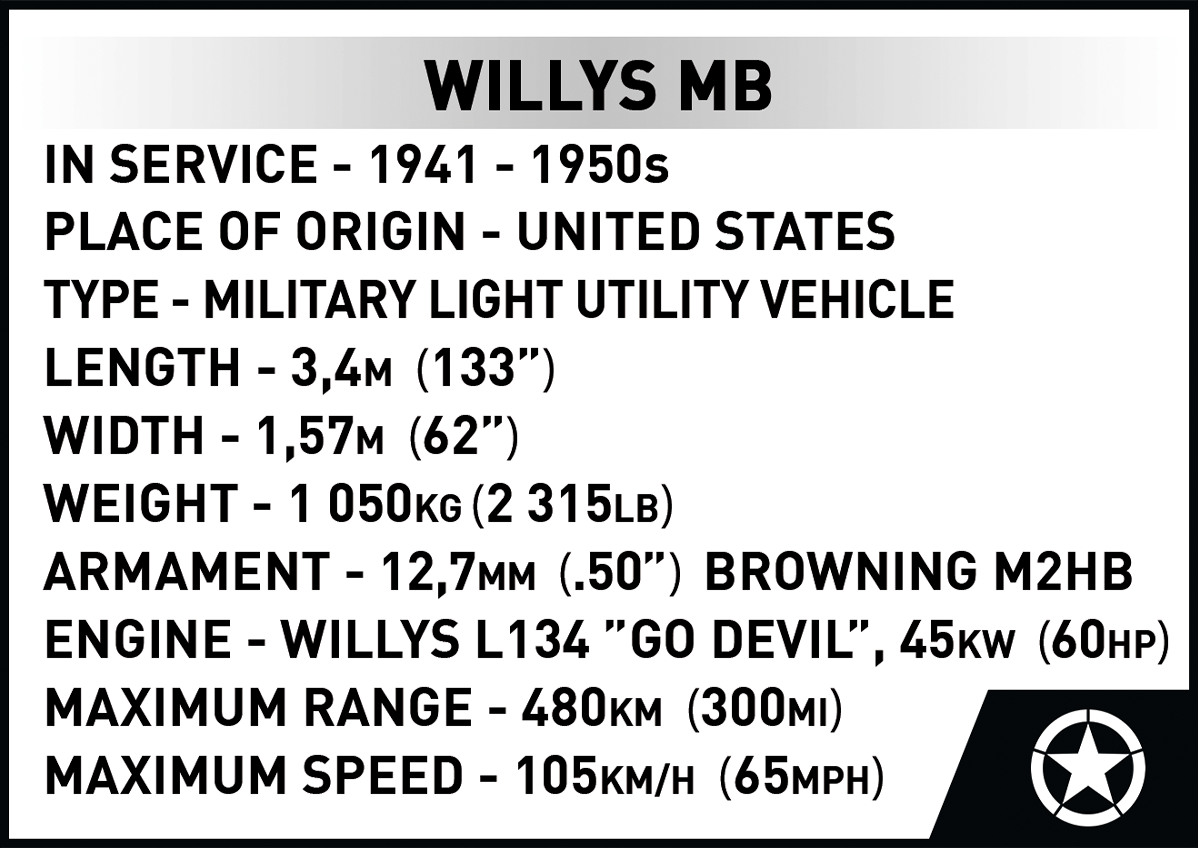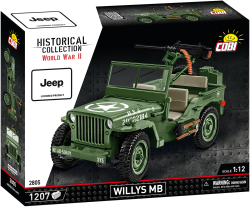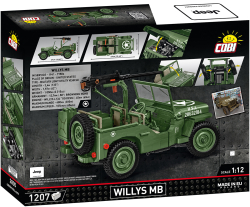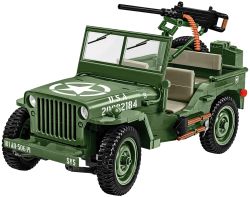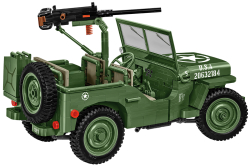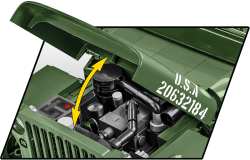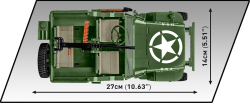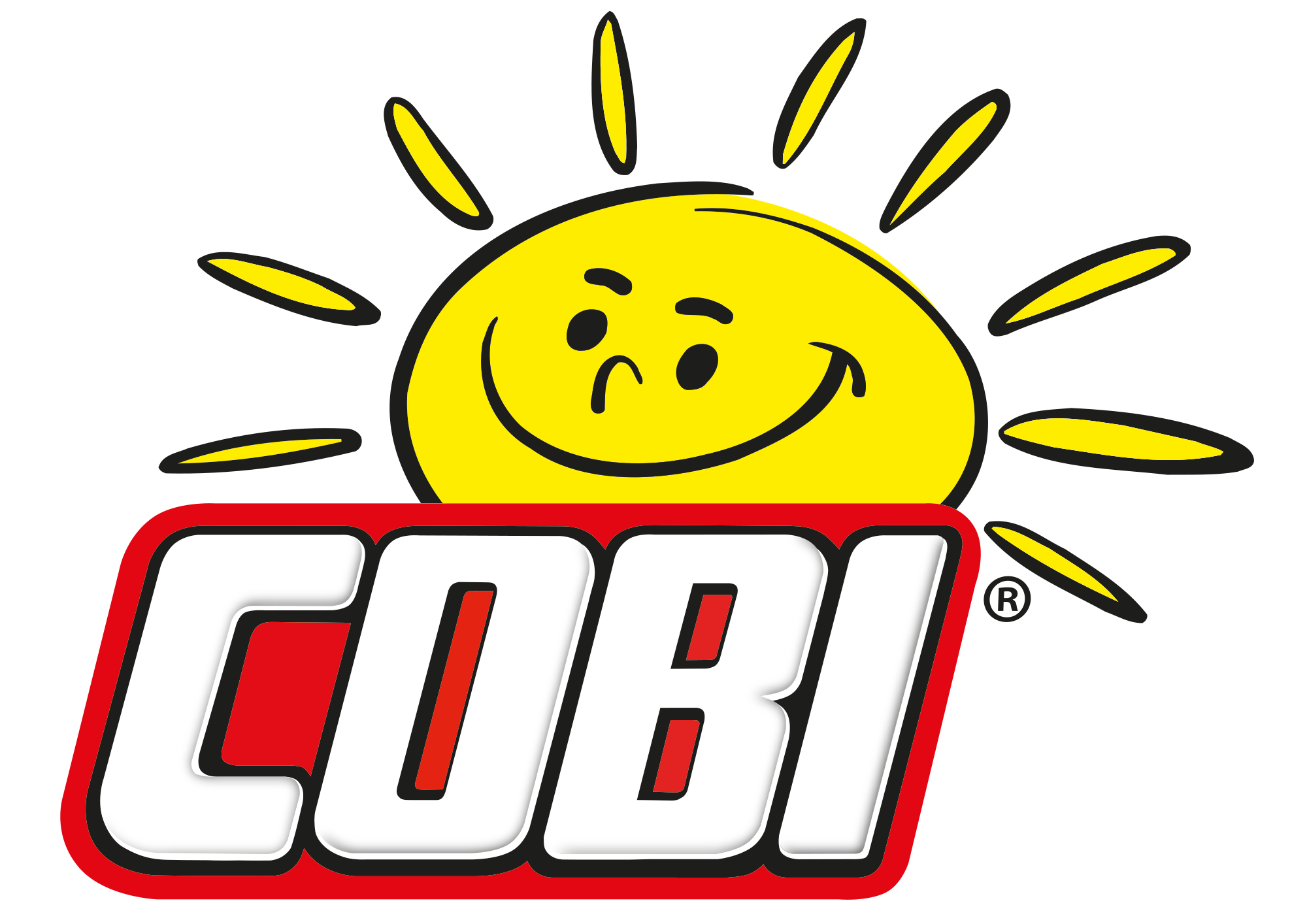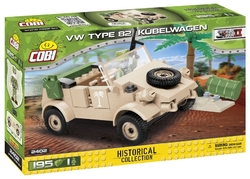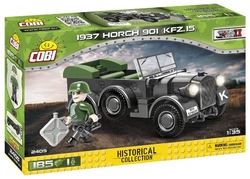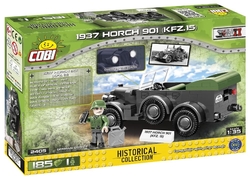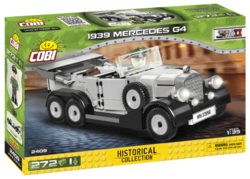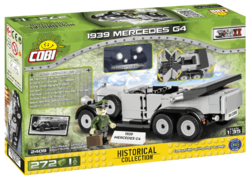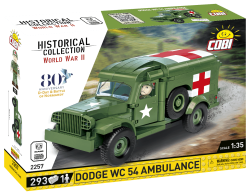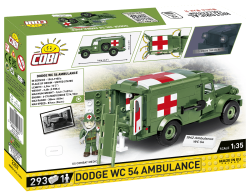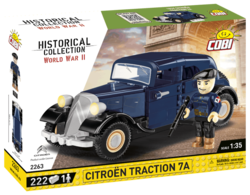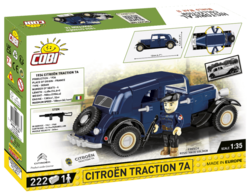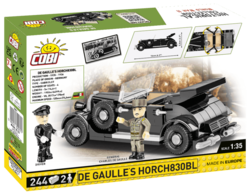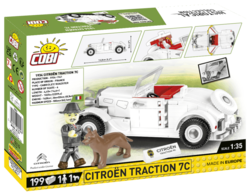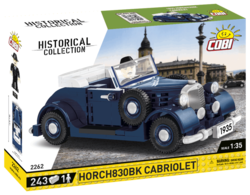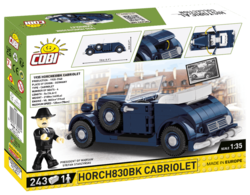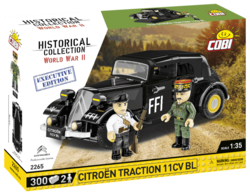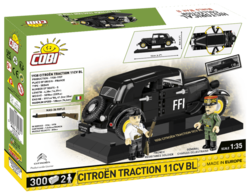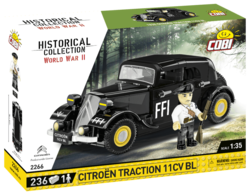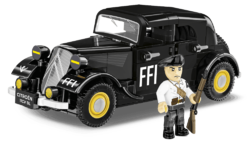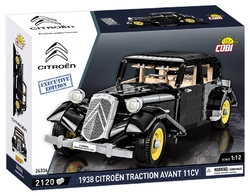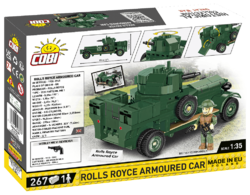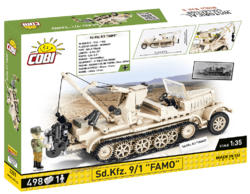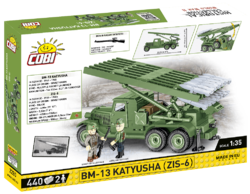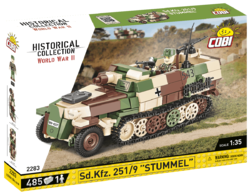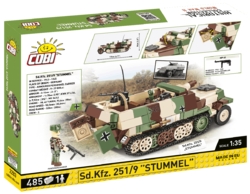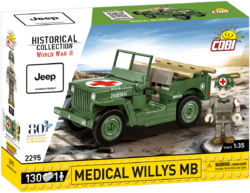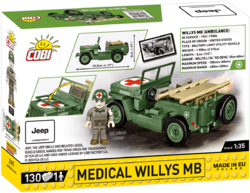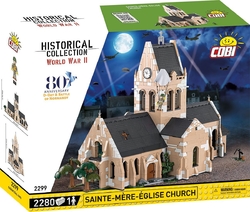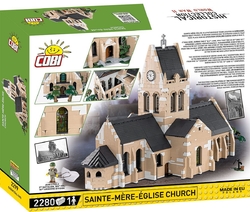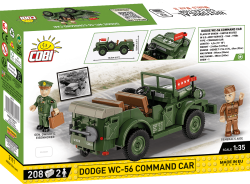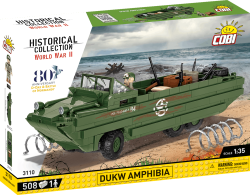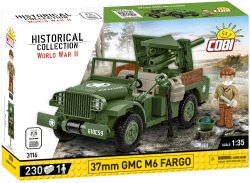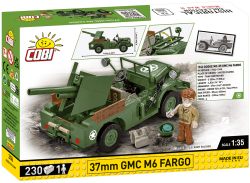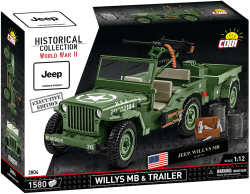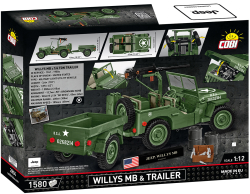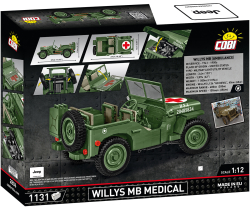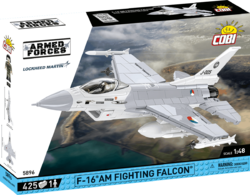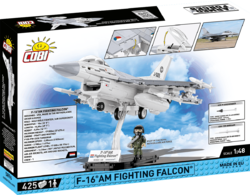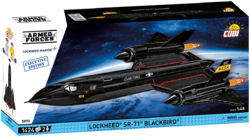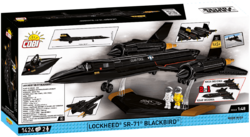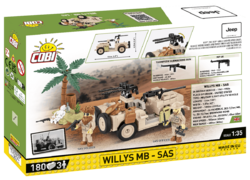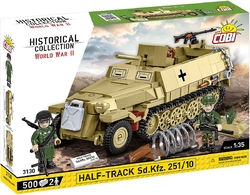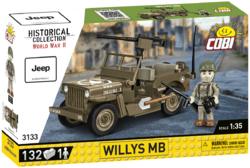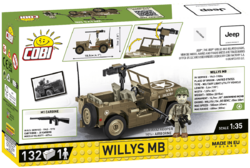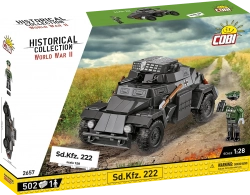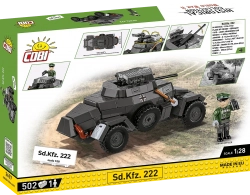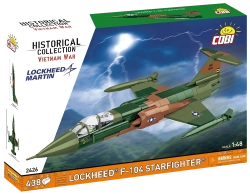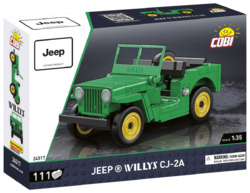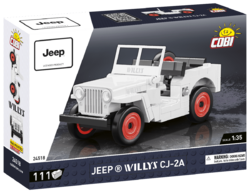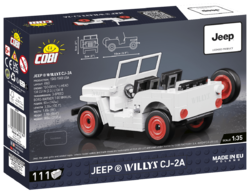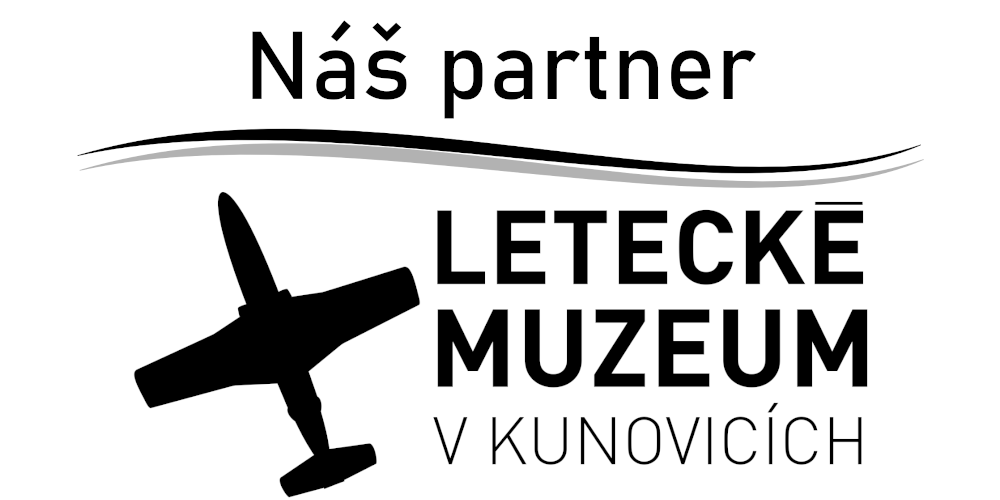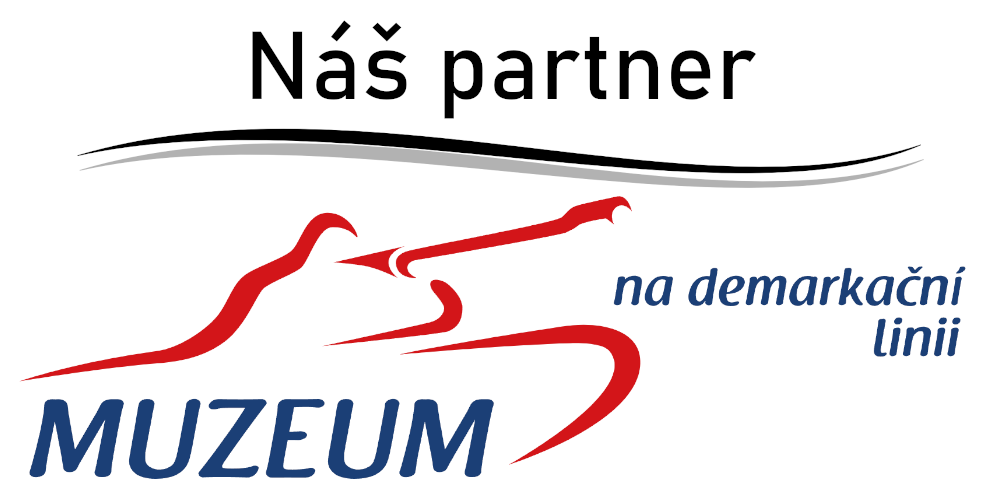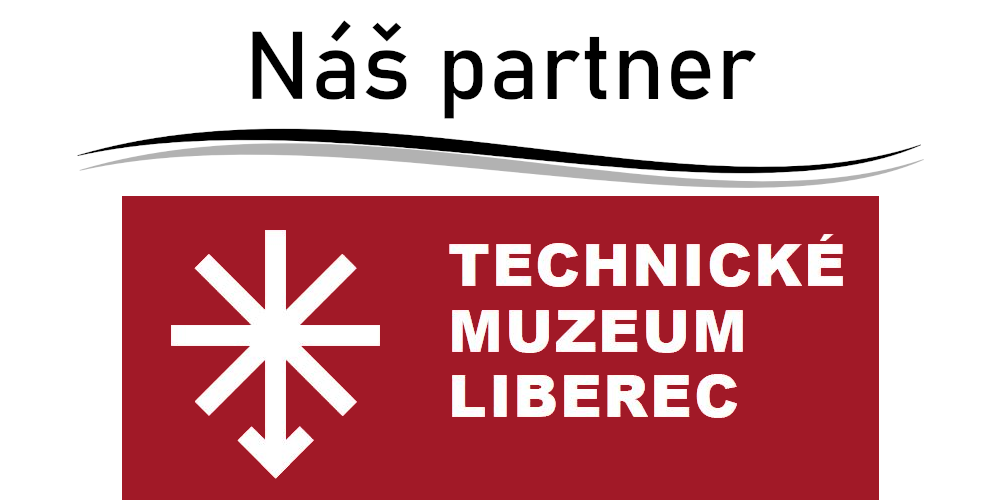Kit of the model of the famous Willys MB 4x4 off-road vehicle in the service of the US Army in classic green camouflage. The model is equipped with a Browning machine gun mounted on a rotating stand. The windshield can be folded down, you can look under the hood, and the wheels turn when you turn the steering wheel. In addition, you will find many details on the kit, for example in the form of a shovel and an ax on the side or a spare wheel and canister in the back.
The kit is produced under the official license of Jeep.
Show more
0 %
(0 Ranking)
2 568 Kč
pcs
Add to Cart
In stock - ready to ship (2 pcs)
| List Number: | COBI-2805 |
| EAN: | 5902251028053 |
| Warranty: | 24 months |
| Manufacturer: | COBI |
| Loyalty Points: | 20 |
| Price excluding VAT: | 2 122,20 Kč |
Description
Parametres
Files and Links
Discussion
Reviews
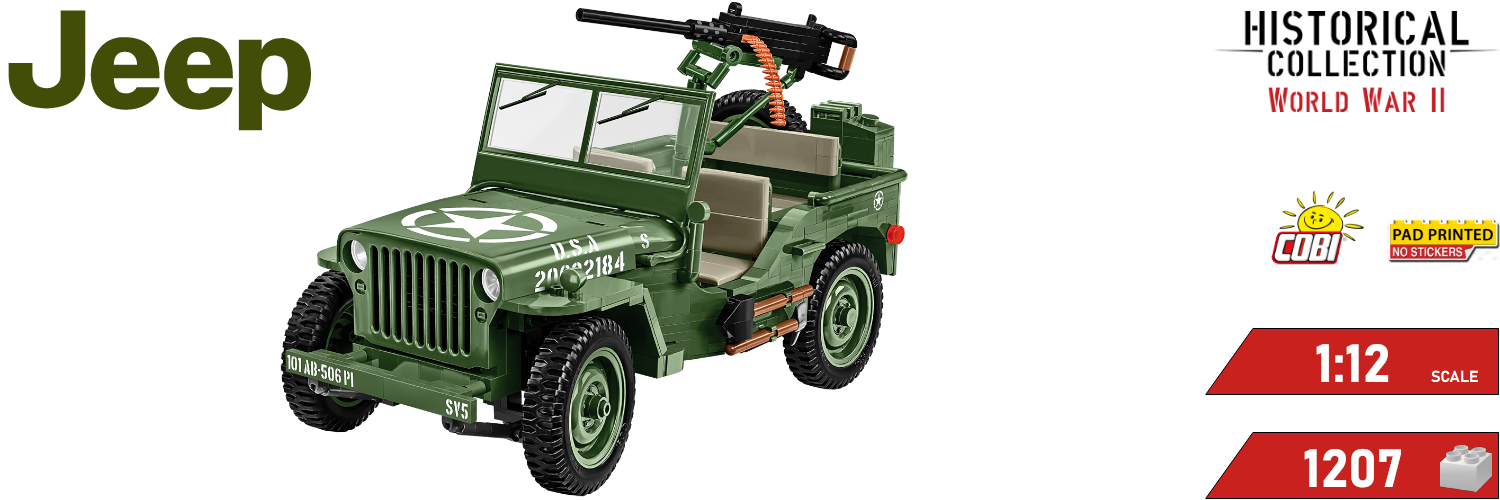
You know that:
- In 1941, 3 companies, American Bantam, Willys-Overlan and Ford Motors, competed for a government contract for the US Army.
- The contest was eventually won by Willys Overland Motors Ltd., as they offered a price of just $739, ushering in a glorious era of Jeeps.
- The car was designed by Karl Probst, who designed the basic concept and design in two days.
- Willys was able to start mass production on the 73rd day after the project was approved. Such flexibility is unthinkable in today's automotive industry.
- While Willys supplied cars to the US military, American Bantam and Ford received orders from the Soviet Union and Great Britain.
- The demand for off-road vehicles was so great that the capacity of Willys was not enough even after repeated increases, so part of the production was transferred to Ford factories under the Ford GPW brand.
- The front lights of the car could be turned towards the engine compartment in case of repairs.
- President Eisenhower once said, "It is one of the three weapons that decided the war in favor of the U.S."
- In total, over 647,925 units were produced in various versions.
- The United States delivered more than 75,000 vehicles to the Soviet Union.
Technical parameters:
- length 3.36 m, width 1.57 m, height with roof 1.77 m
- weight 1,050 kg
- drive unit 4-cylinder Willys L134 GO DEVIL gasoline engine with a power of 45 kW
- number of gears 3 forward and 1 reverse + reduction
- fuel tank volume 68 l
- range 480 km
- fuel consumption 14.1 l/100 km
- speed 105 km/h
- wading capacity 0.53 m
- number of seats 2+2
- the main weapon is a 12.7 mm Browning M2HB machine gun
From the memoirs of war correspondent Ernie Pyle:
"He did everything. He drove everywhere. He was faithful as a dog, strong as a mule and agile as a goat. It was constantly carrying double what it was designed for and still going on.”
Assembly instructions
| Number of figurines | 0 pcs |
|---|---|
| Version (series) | 05/2024 |
| Recommended age | 11+ |
| Number of pieces | 1207 pcs |
| Package weight | 1210 g |
| Scale | 1:12 |
| Dimensions after assembly | 27 x 14 x 15,5 cm |
| Box dimensions | 40 x 30,5 x 9 cm |
| Contains luminous blocks | No |
| Material | Plastic |
| Collection | World War II |
| Compatible with other brand of kits | Yes |
Discussion is empty.
There is no review for product yet













